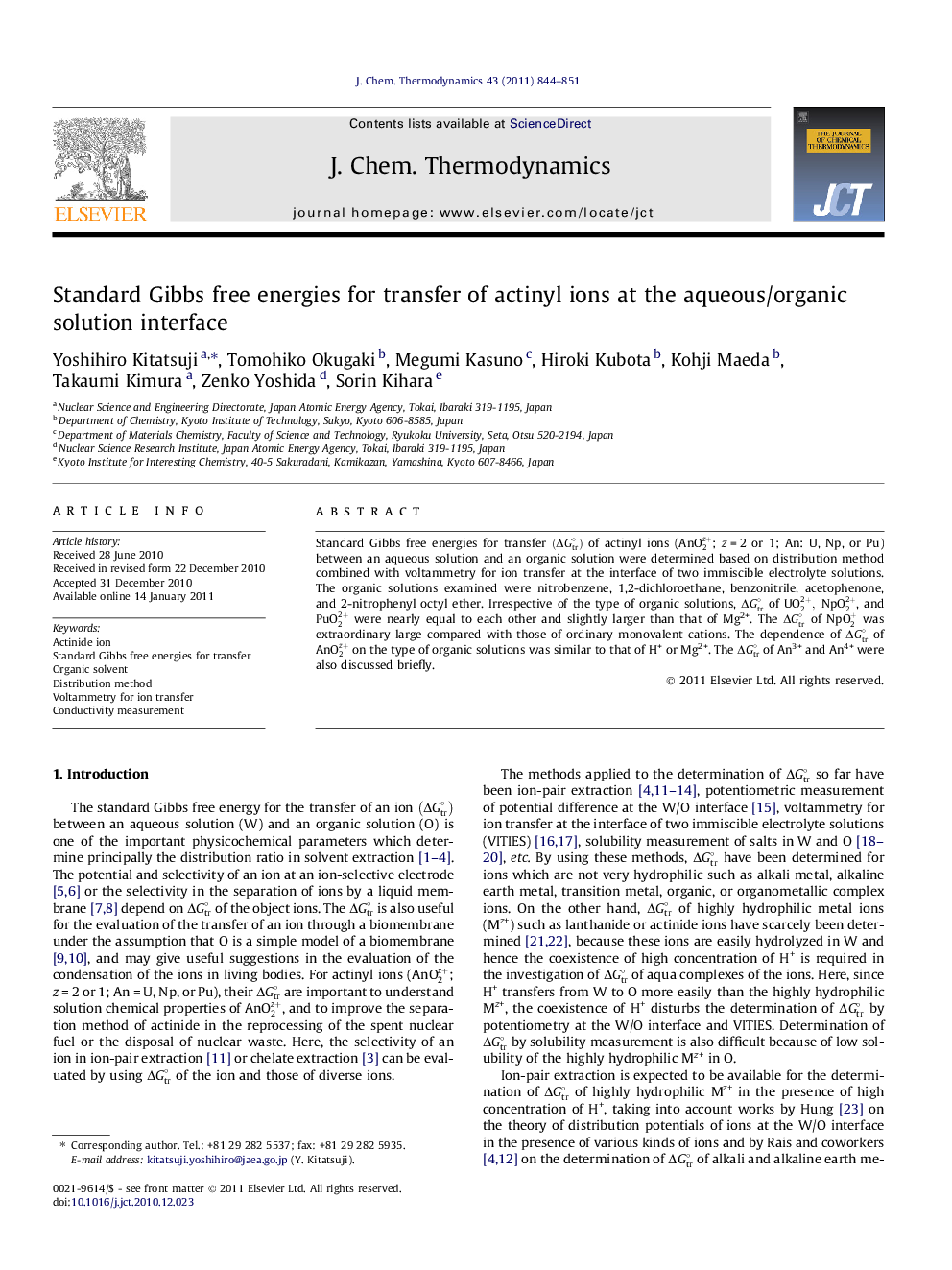| Article ID | Journal | Published Year | Pages | File Type |
|---|---|---|---|---|
| 216626 | The Journal of Chemical Thermodynamics | 2011 | 8 Pages |
Standard Gibbs free energies for transfer (ΔGtr∘) of actinyl ions (AnO2z+; z = 2 or 1; An: U, Np, or Pu) between an aqueous solution and an organic solution were determined based on distribution method combined with voltammetry for ion transfer at the interface of two immiscible electrolyte solutions. The organic solutions examined were nitrobenzene, 1,2-dichloroethane, benzonitrile, acetophenone, and 2-nitrophenyl octyl ether. Irrespective of the type of organic solutions, ΔGtr∘ of UO22+,NpO22+, and PuO22+ were nearly equal to each other and slightly larger than that of Mg2+. The ΔGtr∘ of NpO2+ was extraordinary large compared with those of ordinary monovalent cations. The dependence of ΔGtr∘ of AnO2z+ on the type of organic solutions was similar to that of H+ or Mg2+. The ΔGtr∘ of An3+ and An4+ were also discussed briefly.
Research highlights► Standard Gibbs free energies for ion-transfer of tri- to hexavalent actinide ions. ► Determination is based on distribution method combined with ion-transfer voltammetry. ► Organic solvents examined are nitrobenzene, DCE, benzonitrile, acetophenone and NPOE. ► Gibbs free energies of U(VI), Np(VI) and Pu(VI) are similar to each other. ► Gibbs free energies of Np(V) is very large, comparing with ordinary monovalent cations.
